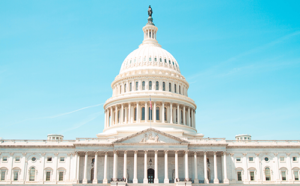A proposed law would relax required minimum distribution rules and expand savings opportunities. But it’s not all good news: It would also reduce the potential estate planning benefits of IRAs.
Major changes to retirement plan rules sailed through the House of Representatives last month and are expected to receive similar bipartisan approval in the Senate in coming weeks. The proposed law, known as the Secure Act (Setting Every Community Up for Retirement Act), would expand access to retirement plans and change required minimum distribution rules to enable investors to save more on a tax-deferred basis.
The bill, if passed, would be a big step toward addressing retirement security concerns as investors live longer and traditional pensions become increasingly scarce.
But there’s also some bad news embedded in the proposed law, particularly for high net worth investors: Major cuts to the estate planning benefits of IRAs. This would be a big blow to investors who have built significant IRA assets with the intention of leaving as much as possible to benefit children or other non-spouse beneficiaries.
Specifically, the Secure Act would require non-spouse heirs to cash out of inherited IRAs and Roth IRAs within 10 years rather than gradually over their lifetimes, as permitted under current law. This limit is expected to increase the Treasury Department’s tax receipts by some $15.75 billion over 10 years—and compensate for lost revenue expected under the act’s other changes.
If and when the Secure Act passes the Senate and is signed into law by President Trump, it will be effective next year. Our WMS team will use this space to advise on how to get the most out of the law’s changes. So stay tuned.
In the meantime, here’s a snapshot of the major modifications under the proposed law:
Adjustments to required minimum distribution rules
The Secure Act would raise the age for required minimum distributions from IRAs from 70 ½ to 72 and allow workers to continue to make contributions beyond that age. Current law prohibits contributions once required minimum distributions begin.
Improved access to plans
The proposed law would increase tax incentives for small employers to offer retirement plans. A current $500 credit for establishing a plan would expand to $5,000. Employers who create a plan with auto-enrollment can take an extra $500 credit for three years.
The law would also make it more feasible for small employers to team up to create multi-employer plans, which can reduce administrative headaches and costs.
There’s a sweetener in the bill for part-time employees, too: It would lower the working hours required for eligibility to participate in an employer-sponsored retirement plan from 1,000 over a 12-month period to 500 over three years.
Liquidity for new parents
Within a year after birth or adoption, parents would be able to take up to $5,000 in penalty-free withdrawals from retirement plans. Current rules impose a 10% penalty for withdrawals prior to age 59 ½, with a few exceptions for hardship.
Access to annuities
Insurance-sold annuities, which can turn a lump sum into a stream of guaranteed lifelong income, have traditionally not been part of 401(k) plans because employers feared liability if an insurer failed to make payments.
The Secure Act would take employers off the legal hook, clearing a major hurdle for annuities to be included in retirement plans.
While more investment choices are usually better, this would be a controversial change. Annuities are typically expensive, complex and of questionable value to investors in a tax-deferred plan. If the Secure Act becomes law, we’ll be getting back to this in more detail.
Cuts to the “stretch IRA”
One of the most loved features of an IRA by high-net-worth folks has been the ability to turn it into a long-term income stream for beneficiaries. Current law requires that non-spouse heirs begin taking distributions from inherited IRAs immediately. But by only taking the required minimum distribution, assets can remain largely intact to continue growing tax-deferred. With decent investment performance, an account can be stretched over an heir’s lifetime. This inherited IRA is known as a “stretch IRA.”
A requirement under the Secure Act to take distributions within 10 years of inheriting a traditional IRA or Roth IRA would sharply limit how much beneficiaries could potentially pocket. Withdrawals from traditional IRAs are taxed at income tax rates, while withdrawals from Roth IRAs are tax free. Either way, once outside of the accounts, the assets lose their tax-favored growth.
How sure are we that the Secure Act will be signed into law? It seems likely, but predicting what Congress will do is best left to political analysts. We’ll keep you informed about further developments and how to prepare if the proposed changes go into effect for 2020.

